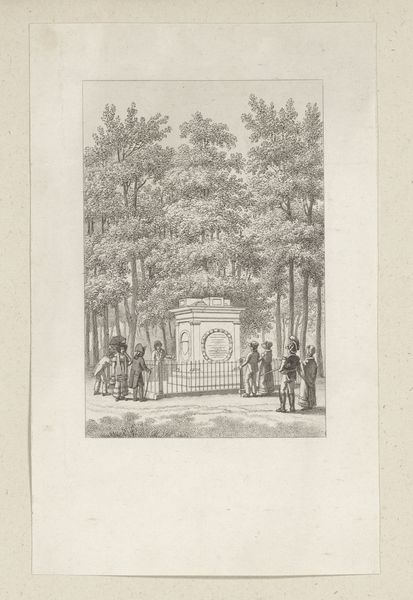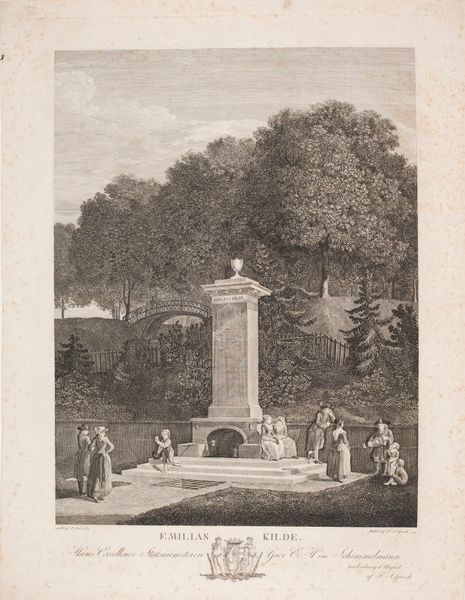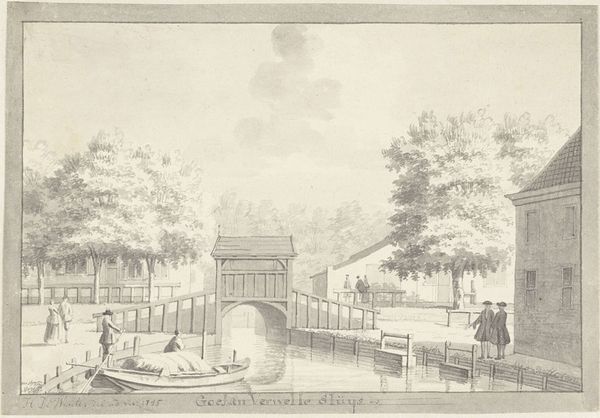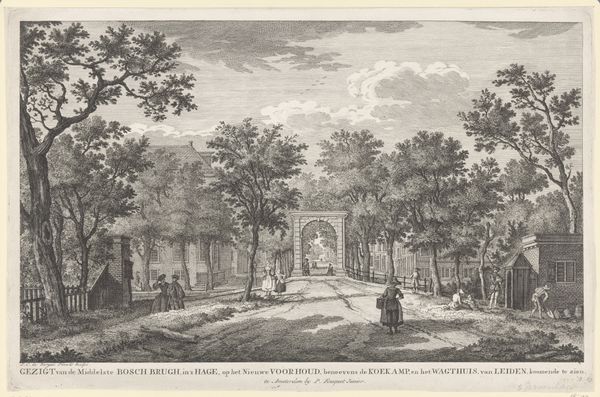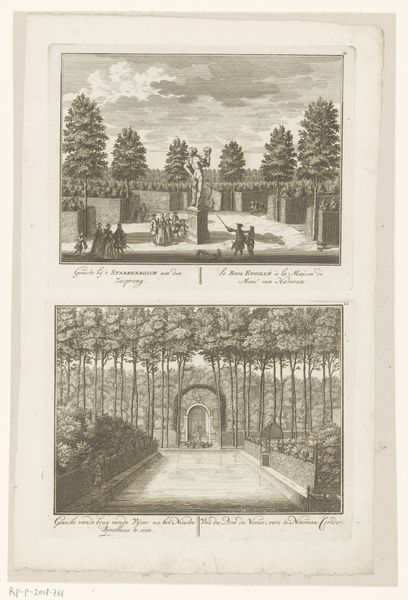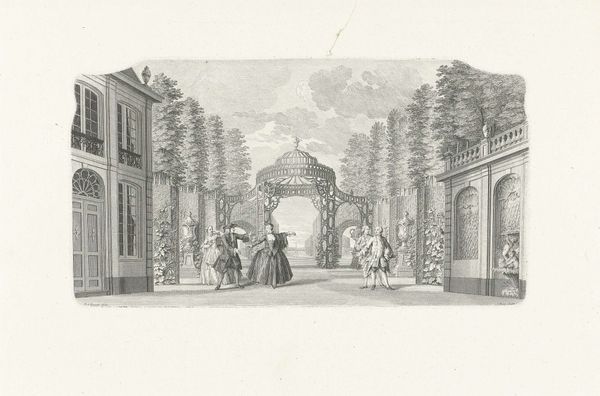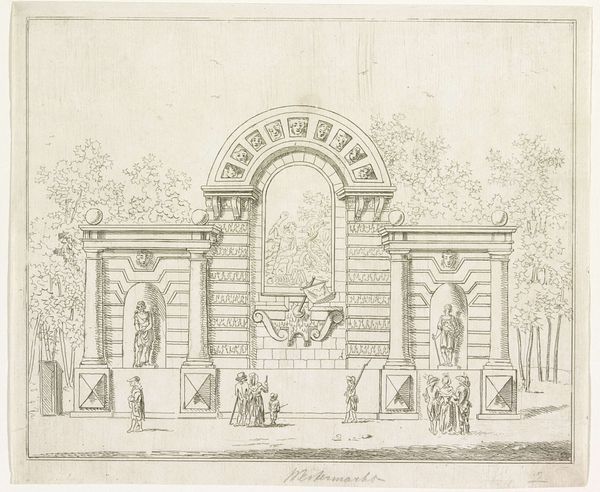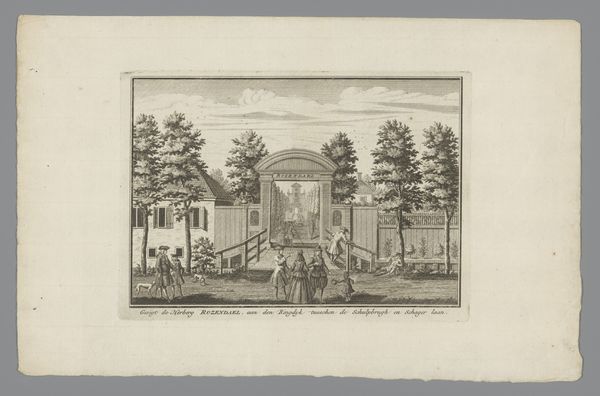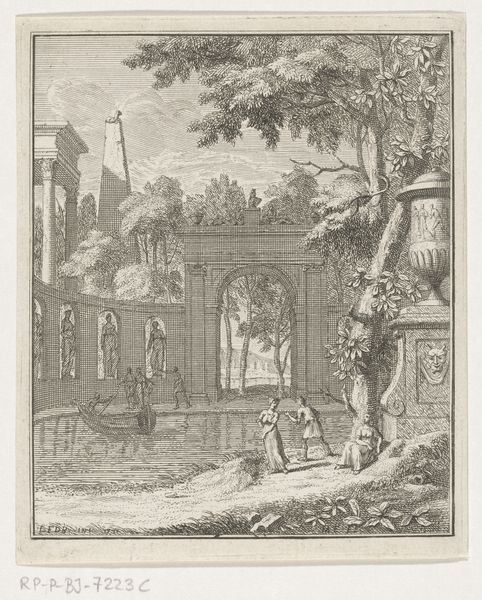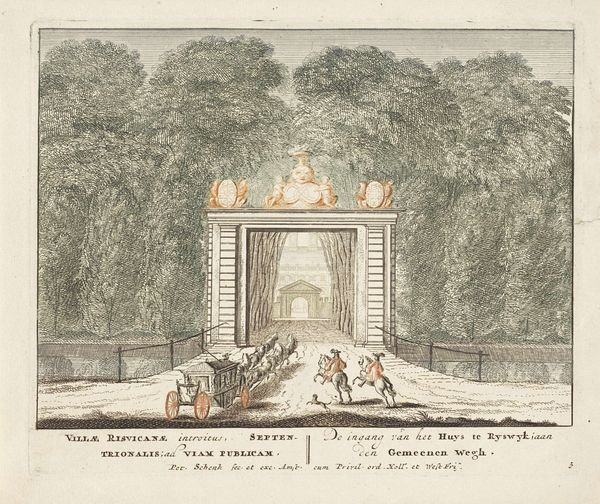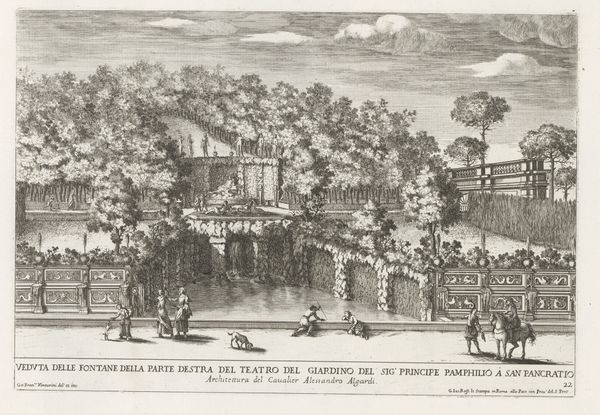
Gedenksteen voor Coster bij 400-jarig jubileum uitvinding boekdrukkunst, 1823 1824
0:00
0:00
print, engraving
#
neoclacissism
#
statue
# print
#
old engraving style
#
landscape
#
engraving
Dimensions: height 188 mm, width 120 mm
Copyright: Rijks Museum: Open Domain
Editor: So, here we have Jacob Ernst Marcus's engraving, "Memorial Stone for Coster at the 400th Anniversary of the Invention of Printing," created around 1824. It depicts a stone monument surrounded by people in a park. There's a definite neoclassical vibe to it. It feels almost like a stage set, with the trees framing the scene. What jumps out at you when you look at this piece? Curator: What strikes me is how this image uses the monument to evoke a specific kind of collective memory. Monuments, of course, aren't just stone. They're vessels for cultural narratives. Notice how the monument is placed within this carefully orchestrated landscape. How does the choice of a park setting influence the viewer’s perception, do you think? Editor: Hmm, I guess the park makes it seem more accessible, like the story of printing is something that belongs to everyone. As opposed to, say, putting it in a church. But it feels a bit… staged. Artificial almost? Curator: Precisely! The artist aims to construct a particular vision of national heritage. The people are positioned almost reverentially around the monument, creating a tableau of respect. How does this calculated arrangement influence the viewer's understanding of Coster and his legacy? Think about the visual language, the neoclassical style… What values does it project? Editor: Well, Neoclassicism often symbolizes order, reason, and a kind of idealized past. It's like they're trying to make printing into a foundational myth for Dutch culture, a source of national pride rooted in logic and progress. Something… timeless, even? Curator: Exactly! And this image participates in the creation of that myth. It freezes a moment of invented tradition. The symbolism, combined with the landscape, elevates Coster beyond a mere inventor; it casts him as a cultural hero. This connects us to broader themes of nationalism and cultural identity. Editor: It’s fascinating to see how an image like this is actively shaping a story, not just recording it. Thanks, I wouldn't have considered it that way. Curator: Indeed, and understanding these layers allows us to look deeper, and become critical participants in the ongoing cultural conversation.
Comments
No comments
Be the first to comment and join the conversation on the ultimate creative platform.

